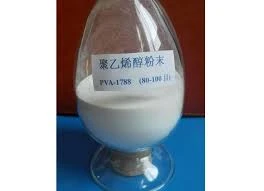Exploring HPMC for Tile Applications
Hydroxypropyl Methylcellulose (HPMC) is a versatile and widely used synthetic polymer, particularly notable in various construction and building applications. Among its significant roles is its use in tile adhesives, where it enhances performance and usability. This article will delve into the functions, benefits, and applications of HPMC in tile installations.
Exploring HPMC for Tile Applications
One of the primary advantages of HPMC is its ability to retain water. Proper water retention is crucial during the drying and curing process of tile adhesives, as it prevents early drying and allows for optimal bonding between the adhesive and the tiled surface. By retaining moisture, HPMC ensures that the adhesive remains workable longer, giving users ample time to position tiles accurately before the adhesive sets.
hpmc for tile

Furthermore, HPMC enhances the viscosity of tile adhesives, improving their application properties. A higher viscosity means that the adhesive can be applied more easily without slumping or sagging, which is essential when working with larger tiles or overhead applications. This viscosity control also helps achieve a uniform spread, ensuring that the tile adheres evenly across its surface, which is vital for structural integrity and aesthetic appeal.
The versatility of HPMC extends to its compatibility with various additives and formulations. This allows manufacturers to create customized tile adhesives that can meet specific requirements, such as enhanced flexibility, quick setting times, or improved mold resistance. Such flexibility makes HPMC an invaluable component in the development of high-performance tile adhesives suitable for diverse environments, from residential kitchens to commercial spaces.
Another significant aspect of HPMC in tile applications is its contribution to sustainability. As the construction industry increasingly aims for eco-friendly solutions, HPMC offers an alternative to traditional binders. It is derived from natural cellulose sources, and its use can lead to lower emissions of volatile organic compounds (VOCs) during the installation process, promoting a healthier indoor environment.
In conclusion, Hydroxypropyl Methylcellulose (HPMC) plays a critical role in tile applications, offering a range of benefits that enhance adhesive performance, application ease, and sustainability. Its water retention capabilities, viscosity-enhancing properties, and adaptability to various formulations make it a preferred choice for manufacturers and installers alike. Whether for residential tiling projects or large-scale commercial applications, HPMC ensures that tiles are securely bonded, properly installed, and capable of withstanding the test of time. As the demand for high-quality, sustainable building materials continues to rise, the importance of HPMC in the tile industry is undoubtedly set to grow, driving innovation and enhancing the effectiveness of tile adhesives worldwide.
-
The Versatility of Industrial Additives: Mhec, Hpmc, And Wall Putty SolutionsNewsMar.28,2025
-
The Importance of HPMC in Modern IndustriesNewsMar.28,2025
-
Partnering with Reliable Manufacturers for Optimal ResultsNewsMar.28,2025
-
Enhancing Construction Performance with Redispersible Polymer PowdersNewsMar.28,2025
-
Enhancing Construction and Household Products with Advanced AdditivesNewsMar.28,2025
-
Building Strong Foundations with Key Construction MaterialsNewsMar.28,2025






